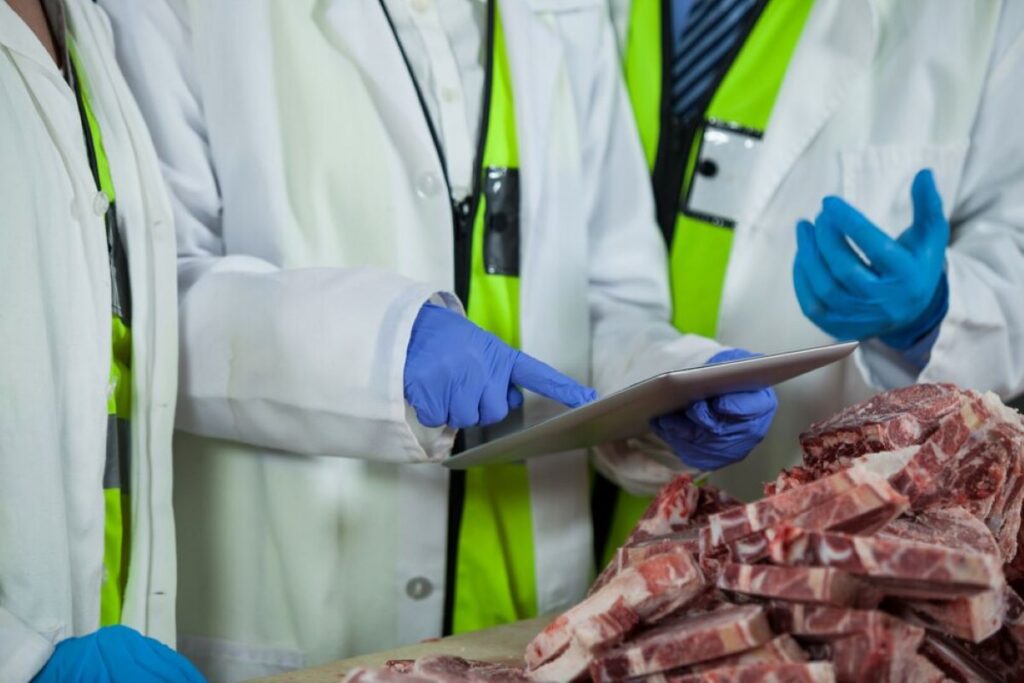In today’s fast-paced food industry, ensuring food safety while maintaining compliance across multiple sites is a complex challenge. With the increasing scrutiny from regulators and the growing expectations from consumers, food businesses must navigate a myriad of regulations and standards. This article explores the strategies and best practices for bridging the gap between food safety and compliance, particularly in multi-site operations.
The Importance of Food Safety in Multi-Site Operations
Food safety and compliance is paramount in any food-related business, but it becomes even more critical when operations span multiple locations. Each site must adhere to the same high standards to protect consumers and maintain brand integrity. A lapse in food safety at one location can lead to widespread repercussions, including foodborne illnesses, legal issues, and damage to reputation.
Understanding the Risks
Multi-site operations face unique challenges, including variations in local regulations, differences in staff training, and inconsistent adherence to safety protocols. These factors can create significant risks, making it essential for businesses to adopt a comprehensive approach to food safety that encompasses all locations.
Additionally, the complexity of supply chains can introduce further risks. Ingredients sourced from different suppliers may not meet the same standards, leading to potential contamination or quality issues. Therefore, understanding and mitigating these risks is crucial for maintaining safety and compliance across all sites.
Consumer Expectations and Brand Integrity
In an era where consumers are more informed and concerned about food safety than ever, maintaining high standards is not just a regulatory requirement; it is a business imperative. A single food safety incident can lead to a loss of consumer trust, which can take years to rebuild. Multi-site operations must ensure that all locations uphold the same rigorous standards to protect their brand reputation.
Furthermore, the rise of social media has amplified the impact of food safety incidents. A negative experience can quickly go viral, reaching thousands, if not millions, of potential customers within hours. This reality underscores the necessity for robust communication strategies and immediate response protocols to address any food safety concerns that may arise. Regular training and updates for staff across all locations are essential to ensure that everyone is equipped with the latest knowledge and practices in food safety, fostering a culture of accountability and vigilance.
Moreover, investing in technology can play a pivotal role in enhancing food safety across multiple sites. Implementing tracking systems for inventory and temperature control, as well as digital platforms for staff training and compliance monitoring, can streamline operations and ensure consistency. By leveraging data analytics, businesses can identify trends and potential issues before they escalate, allowing for proactive measures to be taken. This not only safeguards public health but also reinforces the commitment of multi-site operations to excellence in food safety management.
Establishing a Unified Food Safety Management System
To effectively bridge the gap between food safety and compliance, a unified food safety management system (FSMS) is essential. This system should provide a framework for consistent practices across all sites, ensuring that every location adheres to the same standards and protocols.
Standard Operating Procedures (SOPs)
Developing comprehensive Standard Operating Procedures (SOPs) is a critical step in creating a unified FSMS. These SOPs should cover all aspects of food safety, including handling, storage, preparation, and cleaning processes. By standardising these procedures, businesses can ensure that all employees, regardless of location, are trained to follow the same protocols.
Moreover, SOPs should be regularly reviewed and updated to reflect changes in regulations, best practices, and emerging risks. This proactive approach helps maintain compliance and ensures that all sites are equipped to handle any challenges that may arise.
Training and Development
Training is a vital component of any food safety strategy. Multi-site operations should implement a robust training programme that is consistent across all locations. This programme should cover not only the SOPs but also the importance of food safety and compliance in protecting consumers and the brand.
Utilising a combination of online training modules, in-person workshops, and regular refresher courses can help ensure that all staff members are knowledgeable and competent in food safety practices. Additionally, fostering a culture of accountability and continuous improvement can motivate employees to prioritise food safety in their daily tasks.

Leveraging Technology for Compliance and Safety
Technology plays a crucial role in bridging the gap between food safety and compliance. By leveraging innovative solutions, multi-site operations can enhance their food safety management efforts and streamline compliance processes.
Data Management Systems
Implementing a robust data management system can help centralise information related to food safety and compliance across all sites. This system should allow for real-time tracking of critical control points, monitoring of temperatures, and documentation of compliance checks. By having access to this data, managers can quickly identify trends, address issues, and ensure that all locations are meeting the required standards.
Furthermore, data analytics can provide valuable insights into operational efficiencies and areas for improvement. By analysing patterns in food safety incidents or compliance failures, businesses can proactively address potential risks before they escalate.
Mobile Applications and Remote Monitoring
Mobile applications and remote monitoring technologies can significantly enhance food safety practices in multi-site operations. These tools enable staff to conduct inspections, record data, and report issues in real-time, regardless of their location. This immediacy not only improves compliance but also fosters a culture of transparency and accountability.
Additionally, remote monitoring systems can track critical parameters such as temperature and humidity, alerting managers to any deviations that may compromise food safety. This proactive approach allows businesses to take swift action, minimising risks and ensuring compliance. You may like to visit https://beardjoe.com/choosing-the-right-food-safety-compliance-system-for-your-business/ to get about choosing the right food safety compliance system for your business.
Regular Audits and Continuous Improvement
Conducting regular audits is essential for maintaining compliance and ensuring that food safety standards are upheld across all sites. These audits should assess adherence to SOPs, evaluate training effectiveness, and identify areas for improvement.
Internal and External Audits
Both internal and external audits play a critical role in a comprehensive food safety strategy. Internal audits allow businesses to evaluate their own practices and identify gaps in compliance, while external audits provide an objective assessment from a third party. Engaging with external auditors can also provide valuable insights and best practices from the industry.
It is important to approach audits as opportunities for growth rather than merely compliance checks. By fostering a culture of continuous improvement, multi-site operations can enhance their food safety practices and adapt to evolving regulations and consumer expectations.
Feedback Mechanisms
Implementing feedback mechanisms can further support continuous improvement efforts. Encouraging staff to report issues, suggest improvements, and share best practices can create a culture of collaboration and innovation. Regularly reviewing this feedback and incorporating it into training and SOPs can help ensure that the food safety management system remains relevant and effective.

Conclusion
Bridging the gap between food safety and compliance in multi-site operations is a multifaceted challenge that requires a strategic approach. By establishing a unified food safety management system, leveraging technology, and fostering a culture of continuous improvement, businesses can enhance their food safety practices and ensure compliance across all locations.
As the food industry continues to evolve, staying ahead of regulatory changes and consumer expectations will be crucial. By prioritising food safety and compliance, multi-site operations can protect their consumers, uphold their brand integrity, and ultimately drive business success.
In summary, the integration of effective training, robust data management, regular audits, and a commitment to continuous improvement will not only bridge the gap between food safety and compliance but also position businesses for long-term success in a competitive landscape.
